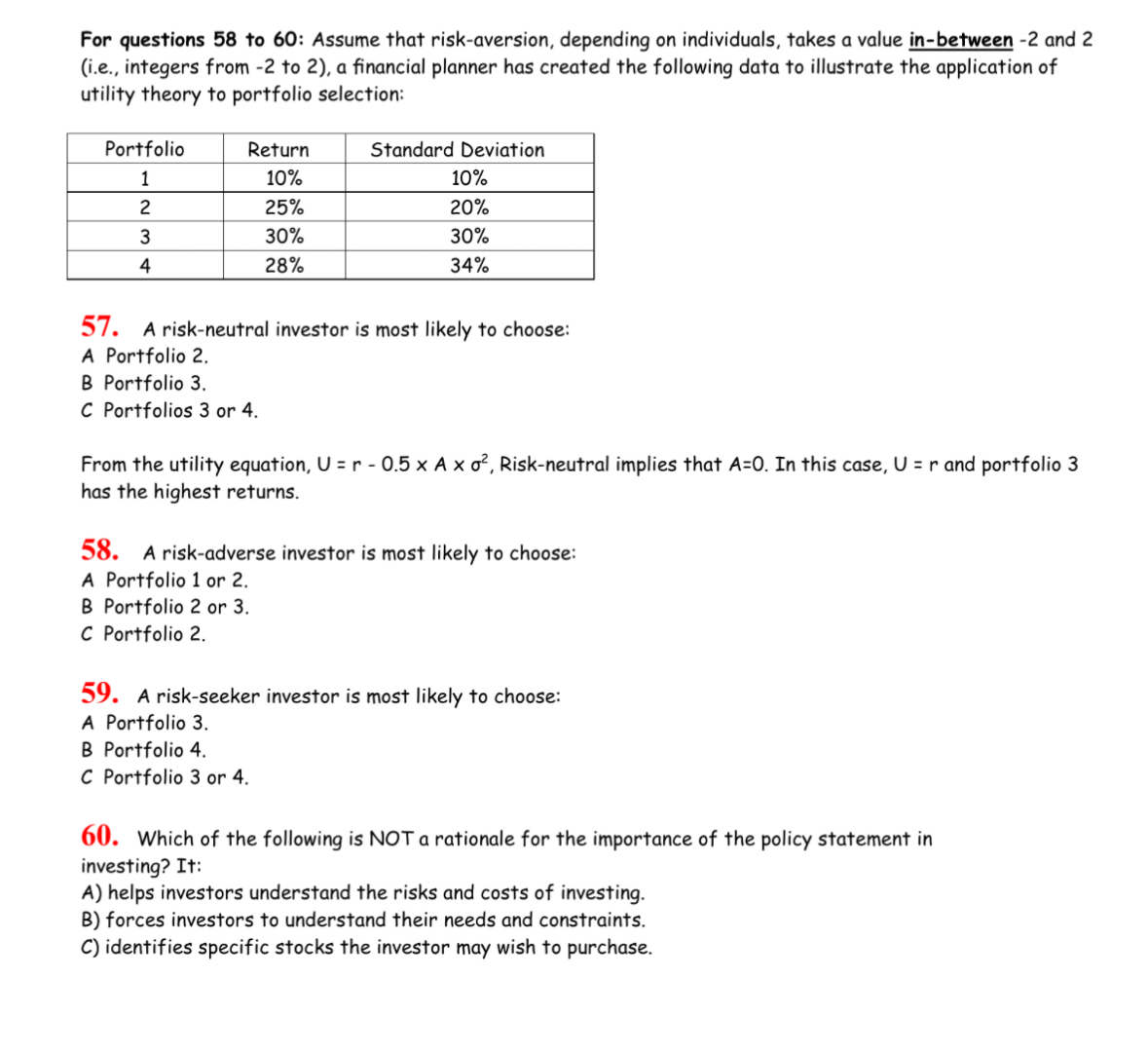Answered step by step
Verified Expert Solution
Question
1 Approved Answer
For questions 5 8 to 6 0 : Assume that risk - aversion, depending on individuals, takes a value in - between - 2 and
For questions to : Assume that riskaversion, depending on individuals, takes a value inbetween and
ie integers from to a financial planner has created the following data to illustrate the application of
utility theory to portfolio selection:
A riskneutral investor is most likely to choose:
A Portfolio
B Portfolio
C Portfolios or
From the utility equation, Riskneutral implies that In this case, and portfolio
has the highest returns.
A riskadverse investor is most likely to choose:
A Portfolio or
B Portfolio or
C Portfolio
A riskseeker investor is most likely to choose:
A Portfolio
B Portfolio
C Portfolio or
Which of the following is NOT a rationale for the importance of the policy statement in
investing? It:
A helps investors understand the risks and costs of investing.
B forces investors to understand their needs and constraints.
C identifies specific stocks the investor may wish to purchase.

Step by Step Solution
There are 3 Steps involved in it
Step: 1

Get Instant Access to Expert-Tailored Solutions
See step-by-step solutions with expert insights and AI powered tools for academic success
Step: 2

Step: 3

Ace Your Homework with AI
Get the answers you need in no time with our AI-driven, step-by-step assistance
Get Started


